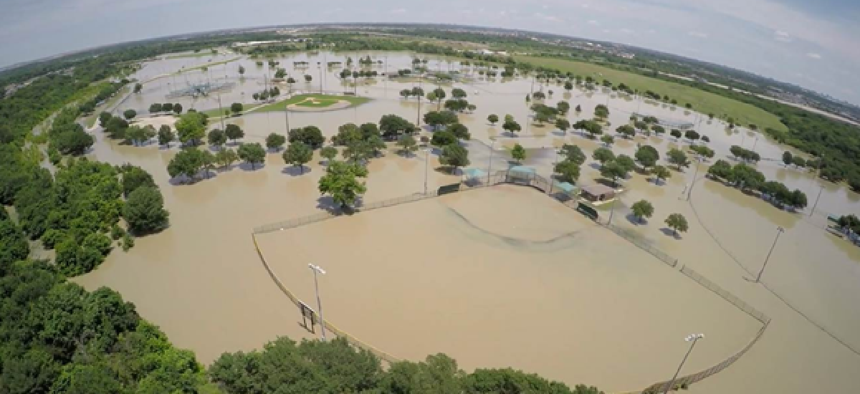FAA speeds drone approvals for Irma recovery


Connecting state and local government leaders
Drone authorizations and operations kicked into high gear in the weeks following Hurricanes Harvey and Irma.
Drone authorizations and operations kicked into high gear in the weeks following Hurricanes Harvey and Irma.
After Hurricane Harvey hit Texas, the Federal Aviation Administration had to learn on the fly to streamline how it issues drone authorizations.
By early September, FAA had quickly issued 137 authorizations to local, state and federal agencies for a wide variety of operations in support of Harvey recovery. Those included fire departments, railroad companies and emergency management officials who used the aircraft to look at buildings, bridges and roadways for critical damage. Cell tower companies also launched drones to assess towers and ground equipment, and insurance companies put them in the air to look at damage to neighborhoods.
FAA Administrator Michael Huerta said the storm was a landmark for the use of drone technology in disaster recovery.
Hurricane Irma drew similar drone authorizations for similar recovery work, showing how UAS technology can be a go-to for disaster recovery operations.
The FAA issued a total of 132 airspace authorizations in the week after Irma struck. Local, state and federal government agencies and critical infrastructure providers in Florida were able to operate drones in the disaster zone, paving the way for the clean up after the huge storm.
The Air National Guard, according to the FAA, used drones normally tasked for combat operations to perform aerial surveys in Florida after Irma, allowing it quicker access to areas and prioritize assistance.
Customs and Border Protection also sent Predator B drones from its operational base in Corpus Christi, Texas, to help map the hard-hit Key West area, as well as Miami and Jacksonville. The CBP drones used radar to survey the condition of infrastructure such as power plants, for the Federal Emergency Management Agency, said the FAA.
Insurance companies and utilities also tapped drones to assess damage and launch recovery efforts.
This article was first posted to FCW, a sibling site to GCN.




